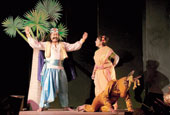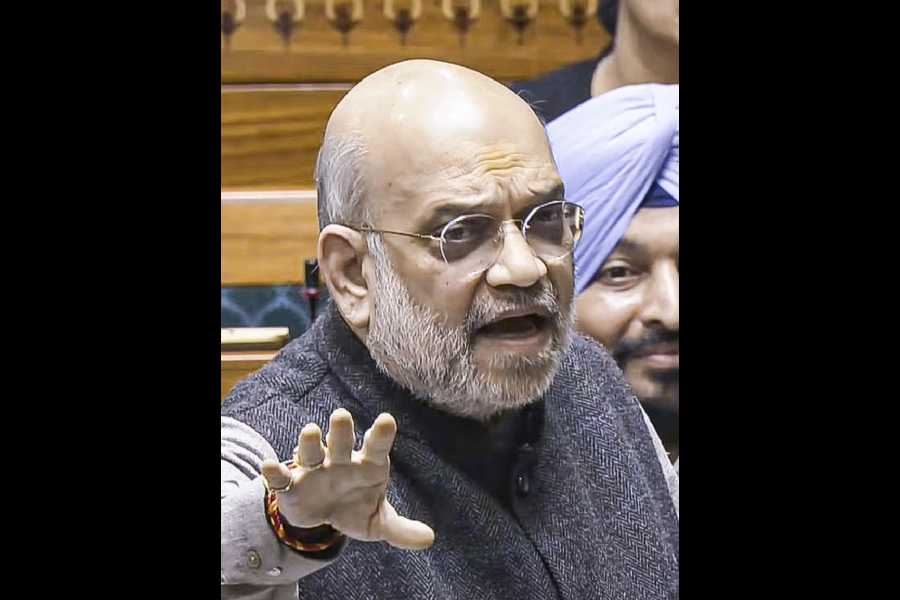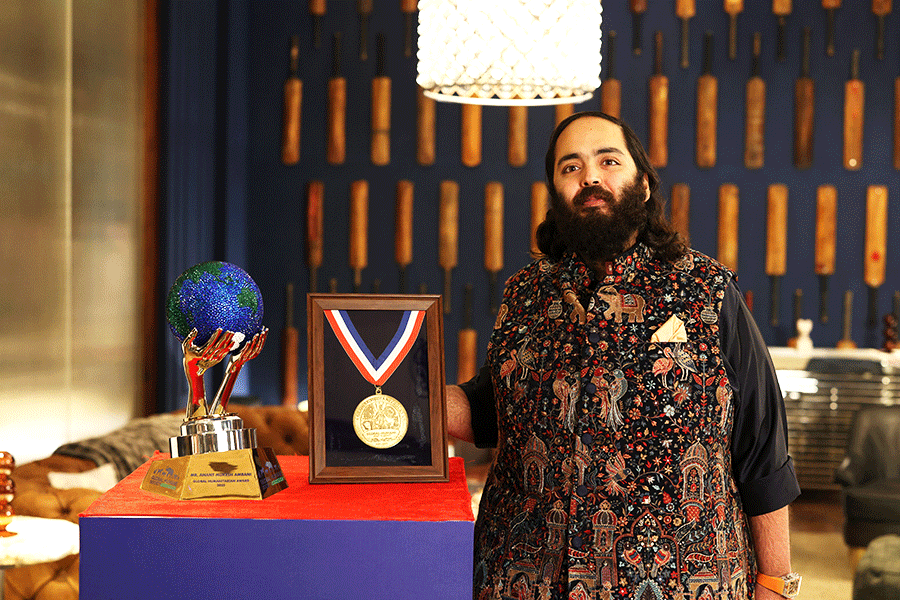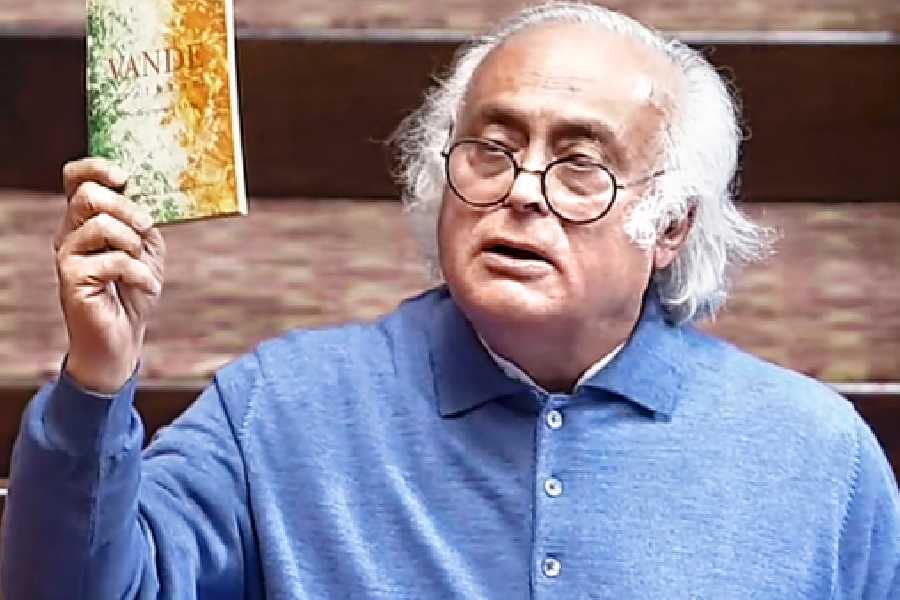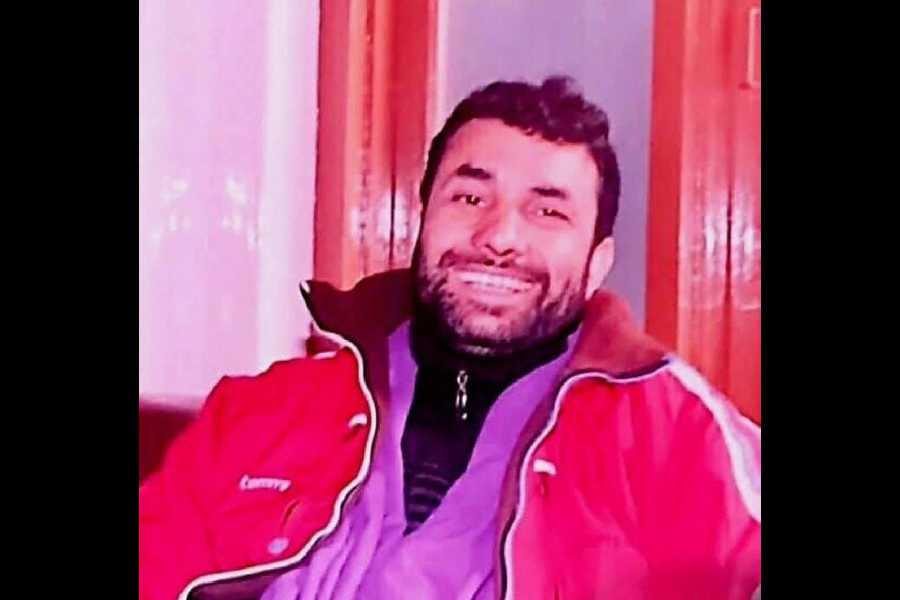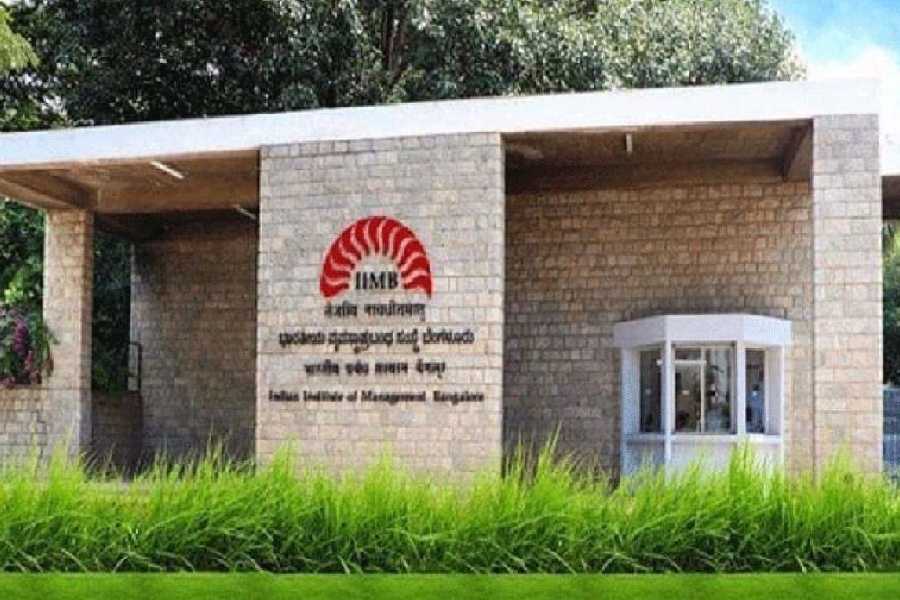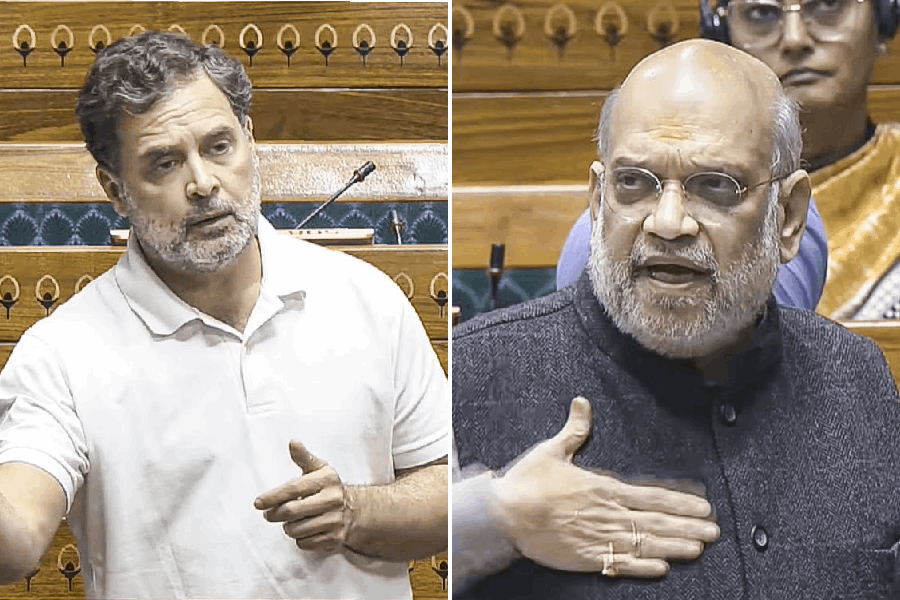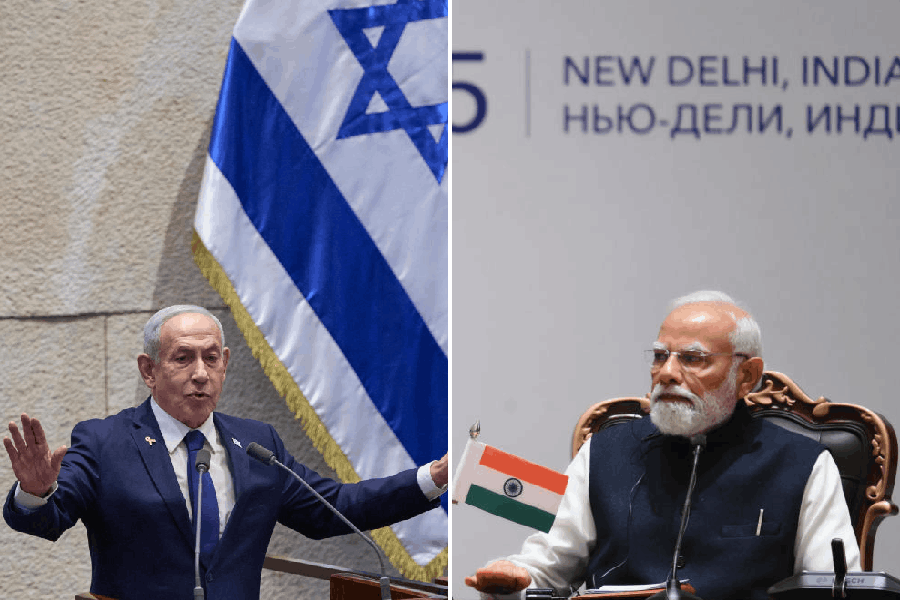 |
| A preview of the play Aschourjo Funtosee to open on April 6 at the Academy of Fine Arts |
A woman is forcibly abducted to a distant land, another tries to bear her husband’s cruelty with the stoicism of a true sati, a third seeks to fill the vacuum within her with narcotic smoke while a fourth tries in her own way to teach her unscrupulous husband a lesson — familiar characters and situations that occur every other day, some of which even happened in the Ramayan. So is Manoj Mitra’s new play Aschourjo Funtosee a take on the epic? Not entirely. Though the threads are drawn from the fabric of the epic, what we have is a modern medley.
Talking of the play, set to open on April 6, 3pm, at the Academy of Fine Arts, the writer-director told Metro: “One could call it a fantasy Ramayan though I hope people don’t busy themselves drawing parallels. Aschourjo combines two Bengali words: Aschorjo or surprising and Chourjo or larceny. Funtosee calls to mind “fantasy”, and something sweet and fun to see.”
Mitra plays the small but significant role of Kalnemi, Ravana’s uncle. He wears a black and white chequered lab coat and a child’s cap. His costume sums up the character of the play that blends childish playfulness, irreverence and wry humour, happily crossing boundaries of forms and genres to examine human relationships and myths.
There is puppetry, mime, a folk flavour and lighting by Joy Sen. The songs are written by Mitra and scored by Soumitra Ray of Bhoomi. Songs like O akash o parabar, ashim, apar, bolo ebar ami kobey hobo amar are likely to linger beyond showtime. The locale is the rural countryside where a theatre troupe is performing this pala written by Ishwar Madhav Chandra Naskar. Here it is not Hanuman who goes to rescue Sita but Hanumati, Hanuman’s girlfriend. Because Madhav Chandra felt that women’s woes cannot end without the direct involvement of women. Hanumati leaves for Lanka on the fabled Mayurpankhi boat. As a magic talisman she has a ring with which she hopes to win Sita’s confidence by passing it off as Rama’s. The ring soon becomes the most sought symbol of freedom and love.
 |
| Bandmates of The Eastern Blues in their studio |
Throughout the week they are counting cash, offering loans and opening new bank accounts, but on Sundays they make music. The Eastern Blues, an in-house rock band of HDFC Bank, has gone beyond performing for tame office events. They will launch their first commercial album, Bondhu Haath Barao this month. Produced by Asha Audio, the album has nine Bengali songs that have been written, mixed and arranged by the band members themselves, in their own studio.
“Earlier whenever the big bosses came down to Calcutta we would get professionals to perform for a musical evening. Later our regional head wanted to use the talented in-house resources for the purpose. Some of us came together to form the bank’s first band in 2009. But for a while we stuck to office dos both in the city and sometimes in Mumbai,' said Sourjendu Gupta, a vice-president of the bank and a leading member of the band.
 |
| Children take part at a cultural event organised by NGO Bharani at Police Auditorium, Bodyguard Lines, on March 25. The NGO works with street children |
Interest in music brought a handful of colleagues together as they practised in each other’s house on Sundays. They went on to rent a space in Kamalgazi to set up their own studio. “When we decided to cut our own album, we wanted to do every aspect of the work ourselves including sound mixing, arranging and recording. We were so proud to set up our studio with our technical knowhow. Our first album will see many of our band members singing. The songs have a touch of reggae, blues and Indian classical,” added Gupta, who has served the bank for 14 years. In between his tight schedule he also conducted audition for new and more versatile band members.
While the bandmates are hoping their first album is a commercial success, they have already started working on the second album. “It will be inspired by Sufi music,” said Gupta with pride in his voice. Music surely is serious business.
Age in the mind
Do the elderly have a role to play in society? Should they prepare themselves in such a way that they are happy in their own company as the younger are busy? These were some of the issues that Swami Vedaswarupananda of the Ramakrishna Mission order addressed at the office of HelpAge India in Chetla on March 19. The occasion was the launch of the Varishtha Nagrik Mancha — A Federation of Senior Citizens’ Associations in the city. Swami Vedaswarupananda gave examples to show that one’s generation strongly influences how old one thinks oneself to be — the definition of old is different for different people. He also encouraged the “young elderly”, like those in their sixties, to make themselves useful to the society, by teaching children and acting as caregivers to those older than them.
“Be self-sufficient”, he said.
Anuradha Sen, deputy director, HelpAge India, took the opportunity to draw the attention of chief guest Sabitri Mitra, minister-in-charge, women and child development and social welfare, for the need of a state policy on older people. The minister assured her of support.
Consisting of several old age organisations from all parts of the city and Salt Lake, “the objective of the Varishtha Nagarik Mancha is to highlight old age issues and problems in various forums, to sensitise the community and the police and interact with related government departments,” said Anuradha Sen of HelpAge. The most heartening feature of the federation is that it is constituted mostly of senior citizens themselves.
The poet’s life
 |
The 150th birth anniversary of Rabindranath Tagore has given occasion to an outpouring of tributes in all forms, mainly exhibitions, books, new recordings and films, many of them apparently inspired by the works of the Nobel Laureate himself, but in actuality as close to the original as chalk is to cheese. Images Unbound: The Life and Times of Rabindranath Tagore, is, as its title suggests, a 90.5-minute film based on the biography of the poet directed by young filmmaker Mujibar Rahman, who was trained in Mumbai but is now based in Calcutta. Mujibar has already made films on Munshi Premchand, Kazi Nazrul, Bhimsen Joshi, Ustad Ali Akbar Khan and Rokeya Sultan.
The familiar story of the poet’s life is narrated from his childhood onwards both in Bengali and English, and save a few strands that have been enacted by actors, which are the only weak links in the film, he has depended heavily on archival material. The structure is simple and it is ideal for viewing by children and those who are being introduced to the poet for the first time.
Apart from introducing viewers to Tagore’s poetry and prose, it deals with his paintings as well, a topic that was till recently rarely touched upon. The poet’s extensive travels both in East and West have been dealt with extensively. Soumitra Chatterje is Rabindranath’s “voice” and the voiceover in Bengali and English are by Debasish Bose and Ananda Lal. Poet Sankha Ghosh is the advisor and Abhik Kumar Dey is the visual consultant. As in most of the visuals the director could have introduced more early recordings of Rabindrasangeet as well. That would have captured the period more vividly. The film will be screened at Nandan II from April 6 for a week in the evenings.
When the wife is away...
 |
Mobile phones are a clue to character. The devices free their owners from their environment and make them speak freely about husbands, wives, partying with people other than spouses. Somehow the speakers often forget that they are in public.
Conversation overheard in an auto: So let’s meet at this club tonight… yes, yes, I have four passes (pause)…My wife? Oh no, she will not create a problem…she is not in town and would only be back tomorrow morning… so 8pm then?
(Contributed by Sebanti Sarkar, Chandreyee Ghose, Poulomi Banerjee, Soumitra Das and Saionee Chakraborty)

